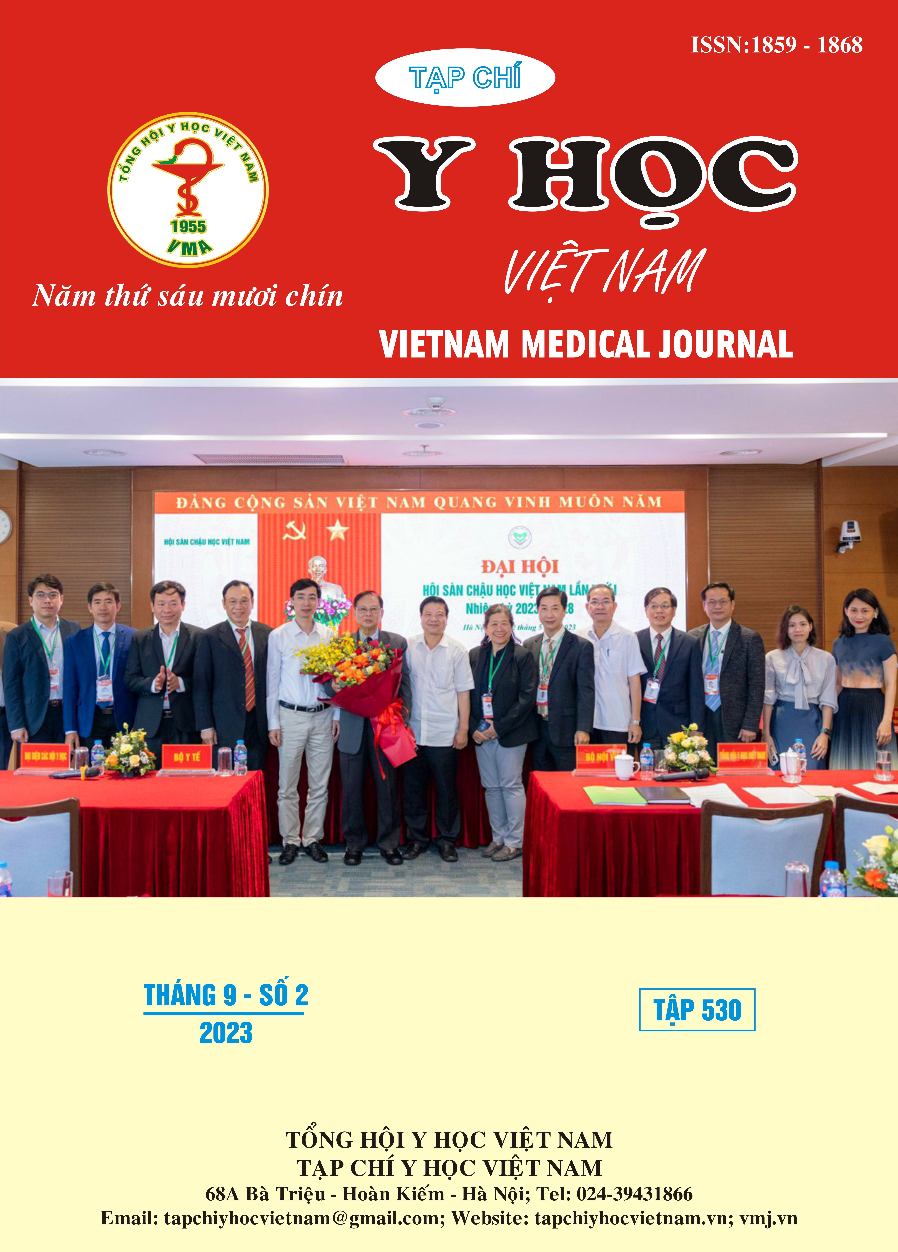CLINICAL, PARACLINICAL OF AUTOIMMUNE HEMOLYTIC ANEMIA IN CHILDREN IN CLINICAL HEMATOLOGY DEPARTMENT, NATIONAL HOSPITAL OF PEDIATRIC
Main Article Content
Abstract
Autoimmune hemolytic anemia (AIHA) is a rare immune disorder. It happens when your body mistakes red blood cells as foreign substances and attacks them. Objectives: To describe the clinical and subclinical characteristics of children with autoimmune hemolytic anemia at the National Hospital of Pediatric. Methods: A survey study in 46 children with autoimmune hemolytic anemia at the Department of Clinical Hematology - National Hospital of Pediatric, using pre-built research medical records. Results: 46 children with autoimmune hemolytic anemia are mainly under 5 years old (80,4%) with a male:female ratio of approximately 1:1. The children admitted to the hospital were anemic with pallor 95,7%, pale skin 71,7% and hemolysis in the blood vessels with dark urine 87% and jaundice 69,9%. Anemia characteristics of children with autoimmune hemolytic anemia are moderate and severe normal red blood cell anemia accounting for 91,4% with hemoglobin concentration of 62,0 g/l. Conclusion: Autoimmune hemolytic anemia is most common in children under 5 years of age with characteristics similar to other hemolytic anemias, although it is a rare disease, it should not be missed, it requires careful clinical examination, the rate meticulous and complete laboratory testing to avoid omission.
Article Details
Keywords
: children, autoimmune hemolytic anemia, clinical, paraclinical
References
2. Nguyễn Thị Mai Hương. Phác đồ chẩn đoán điều trị huyết tán tự miễn ở trẻ em. Hướng Dẫn Chẩn Đoán và Điều Trị Bệnh Trẻ Em, Nhà xuất bản y học, Hà Nội; 2020; 459-463.
3. Teachey DT, Lambert MP. Diagnosis and management of autoimmune cytopenias in childhood. Pediatr Clin North Am. 2013;60(6): 1489-1511. doi:10.1016/j.pcl.2013.08.009
4. Hill A, Hill QA. Autoimmune hemolytic anemia. Hematology. 2018; 2018(1): 382-389. doi: 10.1182/ asheducation-2018.1.382
5. Organization WH. Hemoglobin concentrations for the diagnosis of anemia and assessment of severity. Vitamin and Mineral Nutrition Information System. Geneva: 2011. World Health Organ WHO/NMH/NHD/MNM/11.1. Published online 2017. https://apps.who.int/ iris/bitstream/ handle/10665/85839/WHO_NMH_NHD_MNM_11.1_eng.pdf
6. Nguyễn Công Khanh et al. Thiếu máu tan máu tự miễn ở trẻ em. Luận văn thạc sỹ Y học, Đại học Y Hà Nội; 1993.
7. Nguyễn Thị Lan Anh. Nghiên cứu một số đặc điểm lâm sàng, huyết học và miễn dịch của thiếu máu tan máu tự miễn ở trẻ em. Luận văn thạc sỹ Y học, Đại học Y Hà Nội; 2002.
8. Aladjidi N, Leverger G, Leblanc T, et al. New insights into childhood autoimmune hemolytic anemia: a French national observational study of 265 children. Haematologica. 2011;96(5):655-663. doi:10.3324/haematol.2010.036053
9. Nguyễn Thị Xuyên et al. Thiếu máu tan máu miễn dịch. Hướng Dẫn Chẩn Đoán và Điều Trị Một Số Bệnh Thường Gặp ở Trẻ Em, Nhà xuất bản y học, Hà Nội; 2015; 579-585.
10. Liesveld JL, Rowe JM, Lichtman MA. Variability of the erythropoietic response in autoimmune hemolytic anemia: analysis of 109 cases. Blood. 1987;69(3):820-826.


